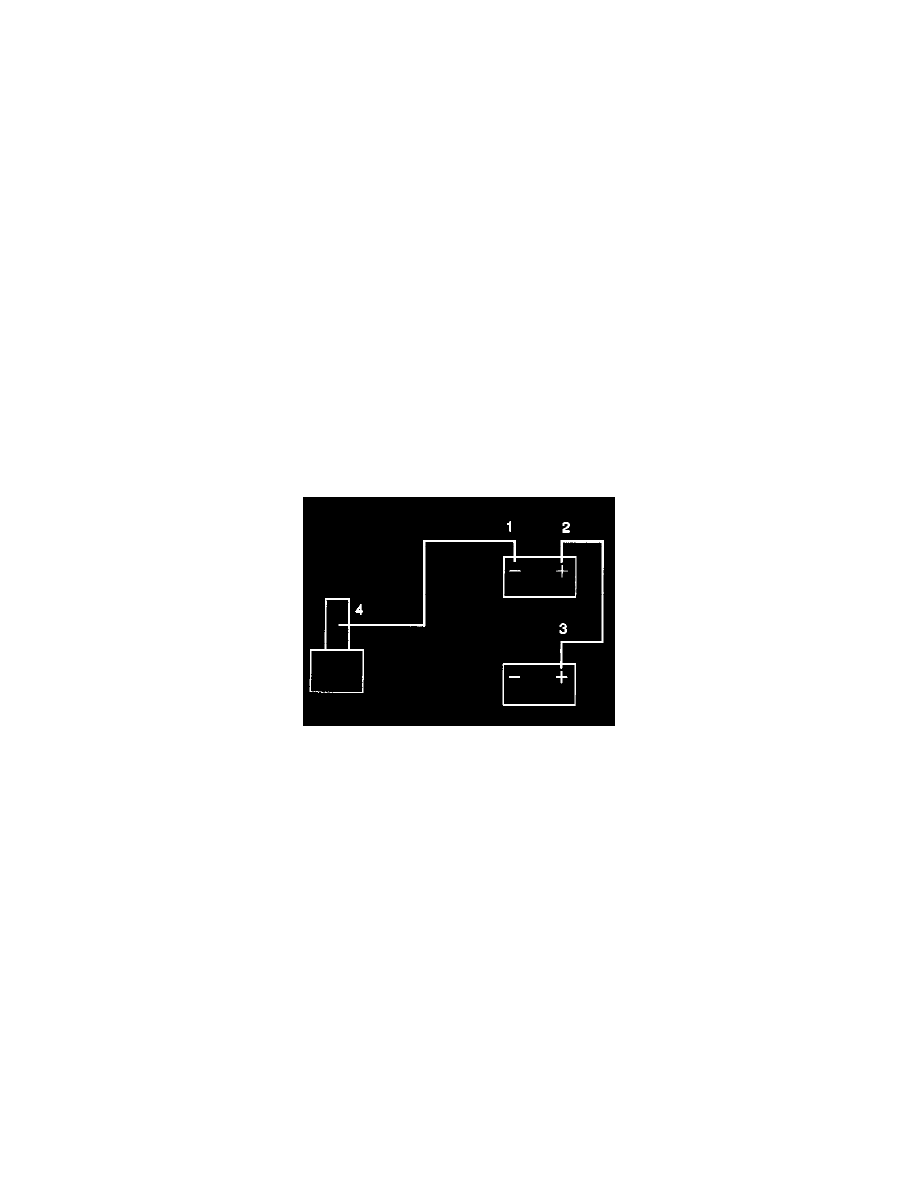K Yukon/Denali 4WD V8-5.7L VIN R (2000)

Jump Starting: Service and Repair
JUMP STARTING IN CASE OF EMERGENCY
NOTE: The booster battery and the discharged battery should be treated carefully when using jumper cables. Follow the procedure exactly. Do not
cause sparks.
CAUTION: Refer to Batteries Produce Explosive Gasses Caution in Service Precautions.
NOTE: Push starting the vehicle can, under some conditions, cause damage to the catalytic converter and an automatic transmission.
NOTE: This vehicle has a 12 Volt, negative ground electrical system. Make sure the vehicle or equipment being used to jump start the engine is also 12
Volt, negative ground. Use of any other type of system will damage the vehicle's electrical components.
1. Position the vehicle with the booster (charged) battery so that the jumper cables will reach.
-
Do not let the two vehicles touch.
-
Make sure that the jumper cables do not have loose ends, or missing insulation.
2. Place the automatic transmission in PARK.
3. Place the shift lever of a manual transmission in NEUTRAL.
4. Set the park brake.
5. Block the wheels.
6. Turn off all electrical loads that are not needed (leave the hazard flashers ON).
7. Turn OFF the ignition switch.
8. Check the built-in battery hydrometer of the discharged battery. Refer to Battery Hydrometer Displays Yellow Dot. See: Starting and
Charging/Testing and Inspection/Symptom Related Diagnostic Procedures/Battery Hydrometer Displays Yellow Dot
If the hydrometer is clear or light yellow, do not jump (charge) the battery. Replace the battery.
9. Attach the end of one jumper cable to the positive terminal of the booster battery (2).
10. Attach the other end of the same cable to the positive terminal of the discharged battery (3). In the illustration, the upper battery is the booster
battery and the lower battery is the discharged battery.
11. Attach one end of the remaining jumper cable to the negative terminal of the booster battery (1).
12. The final connection (4) is attached to a solid engine ground (such as a grounding stud, the A/C compressor mounting bracket, or the generator
mounting bracket), at least 450 mm (18 in) from the discharged battery.
IMPORTANT: A spark could ignite an accumulation of hydrogen gas from the discharged battery.
13. Start the engine of the vehicle that is providing the boost.
14. Crank the engine of the vehicle with the discharged battery.
